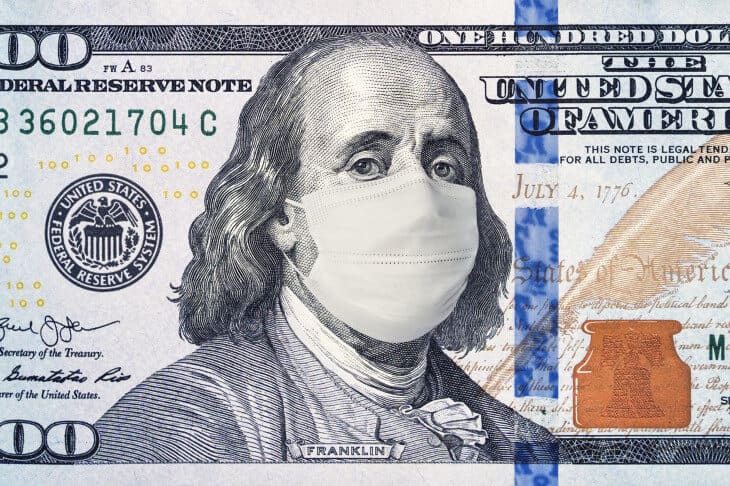Join Our Telegram channel to stay up to date on breaking news coverage
The crippling effects of the COVID-19 pandemic on the global economy are gradually unfurling, and they’re extending beyond the stock and cryptocurrency markets.
According to an editorial by the 21st Century Business Herald, a Chinese media outlet, the pandemic might signal the end of the US Dollar’s reign as the global reserve currency.
This foreseen contraction, referred to as the de-dollarization of the global economy, is backed by similar predictions by renowned financial institutions, including Goldman Sachs and Morgan Stanley. The editorial states that these bodies attribute the decline as yet another economic effect of the CoronaVirus, and that the dollar would plunge by up to 24% in April to June, if Goldman Sachs’ predictions are correct.
US Consumerism To Be The Dollar’s Downfall
All of these predictions of doom are centered around the fact that the US economy is driven by its citizen’s dependence on consumption. With the social distancing and stay home measures implemented to curb the spread of the virus, the US fiscal economy has experienced an abrupt slowdown, and the editorial claims that the US cannot manage the situation without experiencing a recession.
Editor-in-chief, Wang Chao, claims that the U.S. stock market was a bubble due to a ten-year monetary stimulus, and assumes that there may be a bond market crash.
The article argues that the world is losing faith in the capacity of the US to provide a global public benefit. According to the text, the CoronaVirus crisis is “the beginning of the de-dollarization of the global economy since people have seen the Fed crippled and the US credit depleted.” The prevalent message is that the Corona Virus can cripple the US economy, and it even suggests that that is the price that the country may pay for confronting China.
More Predictions of Fiscal Doom
Morgan Stanley’s economists, led by Ellen Zentner, told customers in a Sunday survey that they now see a 30.1% decline in American gross domestic product in April-June. This would push up unemployment to an average of 12.8% over the timeframe, they explained.
Last week, the Fed restarted financial crisis-era initiatives to support commercial paper and capital markets by lowering interest rates to near zero and agreeing to raise its treasury holdings by at least $500 billion and mortgage securities by at least $200 billion.
These fears were shared by the President of the Federal Reserve Bank of St. Louis, James Bullard, when he estimated that the U.S. unemployment rate might hit 30% in Q2 as a result of shutdowns to counter coronavirus, with an unprecedented 50% decrease in gross domestic product.
Join Our Telegram channel to stay up to date on breaking news coverage


